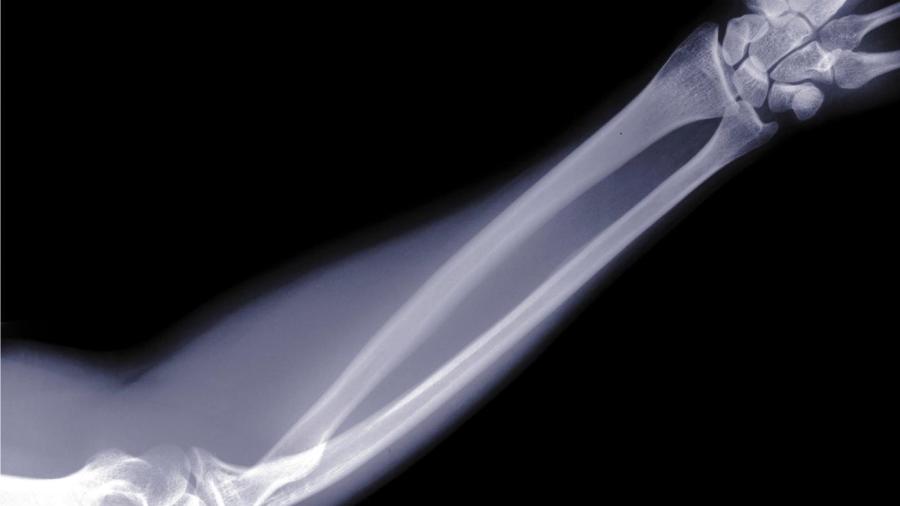What Are the Names of the Bones in the Human Arm?

The three bones in the human arm are the humerus, the ulna and the radius. The humerus comprises the upper arm from the shoulder joint to the elbow. The lower arm includes the ulna and radius, both running from the elbow to the wrist.
The radius and ulna run parallel to one another, with the radius on the same side as the pinkie finger and the ulna on the thumb’s side. The ulna is both longer and larger than the radius, and at its upper end, also known as the proximal end, the ulna forms the elbow joint. The radius’ connection to the elbow is what allows the forearm to move separately from the upper arm. At the lower end, called the distal end, both the radius and ulna connect to the eight smaller bones comprising the wrist.
The proximal end of the humerus connects to the shoulder at the shoulder blade, also known as the scapula, through what is called a ball-and-socket joint. This ball-and-socket joint enables the upper arm’s humerus to move in a wide, circular fashion and connects to four different muscle groups controlling the movement of the upper arm. The distal end of the humerus forms the inside part of the elbow hinge with the ulna.





